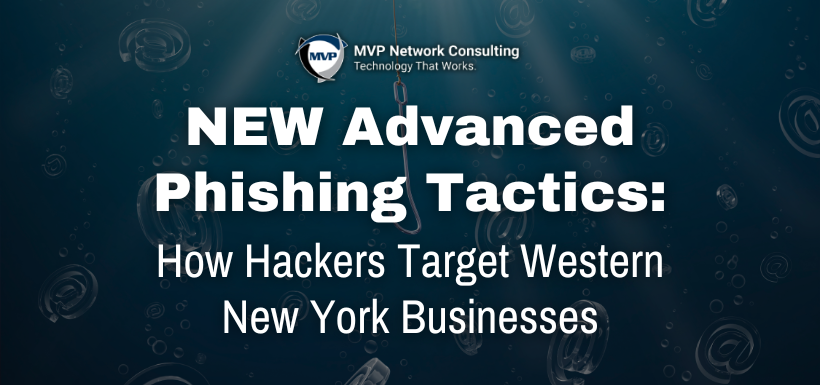NEW Advanced Phishing Tactics: How Hackers Target Western New York Businesses

Ikram Massabini
April 24, 2024

Recently, an insidious threat has been lurking in the digital shadows, preying on unsuspecting businesses like those in our Western New York community. Spear phishing, a highly targeted form of cyber attack, has evolved into a more sophisticated tactic that is now infiltrating legitimate document sharing services such as Dropbox, Docusign, Google Drive, Onedrive, and SharePoint.
Imagine this scenario: you receive an email from a trusted platform like Dropbox, seemingly innocuous, with a link to a document hosted on the legitimate Dropbox page. However, unbeknownst to you, hackers have compromised a genuine cloud sharing account, giving them the perfect disguise to slip past firewalls and other traditional security measures.
Upon clicking the link, you’re redirected to a secondary, malicious link embedded within the document. This is where the danger truly lies. These malicious links could serve up malware directly onto your system or redirect you to a counterfeit Microsoft 365 login page. The latter is particularly cunning, as it prompts you to input your M365 credentials under the guise of accessing the file, all while receiving authentic prompts from your authenticator app.
The repercussions of falling victim to such an attack are grave. Not only do hackers gain access to your credentials, but they also infiltrate your account, potentially compromising sensitive data and tarnishing your business’s reputation. What’s worse, since the malicious link originates from a document hosted on a cloud sharing platform, it often bypasses common security tools like EDR, MDR, and antivirus software.
So, what does this mean for businesses in Western New York?
For starters, it means that your clients could unknowingly be receiving documents purportedly from you via trusted services like DocuSign. This not only puts them at risk but also reflects poorly on your business’s credibility. It’s imperative to address this threat both internally and with your clients, raising awareness and implementing necessary precautions.
Here are some actionable steps you can take to protect yourself and your clients:
#1: Prioritize User Security Awareness
Educate your team and clients about the methods used in cloud-hosted phishing attacks. Encourage a culture of vigilance and promote a “See something, say something” mentality.
#2: Implement Email Security Controls
Consider deploying new email security measures to identify and alert users about emails containing links to potentially harmful cloud-hosted sites.
#3: Restrict Access to Suspect Sites
Explore options for blocking access to common hosting platforms and data sharing services that your organization and clients do not require. This can be achieved through web content filtering or DNS security controls. However, ensure clear communication with affected parties to minimize disruptions.
#4: Over-Communicate and Educate
Don’t underestimate the power of communication in mitigating cyber threats. Keep your clients informed about the evolving nature of phishing attacks and emphasize the importance of remaining vigilant.
#5: Maintain Vigilance
Stay proactive in monitoring and safeguarding your clients’ networks against potential threats. Regularly review security protocols and adapt them to counter emerging risks.
The rise of sophisticated phishing campaigns underscores the critical need for constant vigilance and proactive cybersecurity measures. By staying informed, fostering a culture of security awareness, and implementing robust defenses, businesses in Western New York can fortify themselves against these insidious threats and safeguard their operations, reputation, and data integrity.
Book a 3rd Party Mini Pen Test
Organizations gain valuable insights into their security posture, allowing them to prioritize and remediate vulnerabilities before they can be exploited by malicious actors. This proactive approach not only enhances overall security but also helps in building a robust defense strategy tailored to the specific needs and risks faced by the organization.
